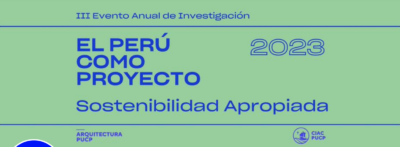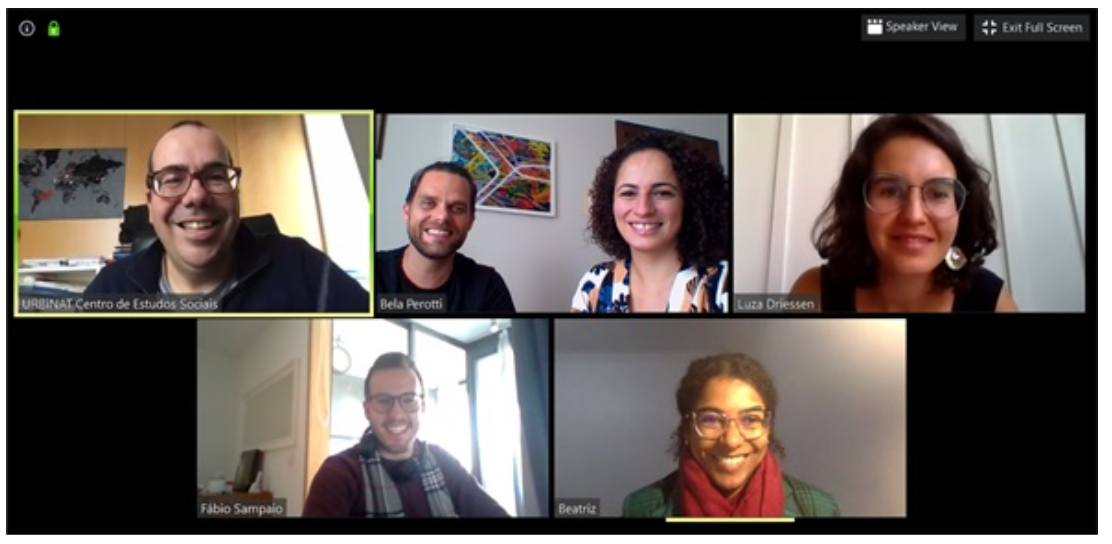Copenhagen-based planning and landscape firm SLA Architects, one of the technical partners of the URBiNAT project, has designed and implemented a Nature-Based Solution to guard against the risk of flash flooding in the city centre while providing a new green space for the benefit of residents. The project has involved transforming a heavily trafficked urban space into a new public green space. Some 9.000m2 of asphalt have been replaced by nature including 586 new trees of 48 local species.
The combined climate adaptation and urban space project Bryggervangen and Skt. Kjelds Plads is Copenhagen Municipality’s largest, and greenest, cloudburst adaption project so far.The project adopts the First Flush method, where the first dirty rainwater on the carriageway is conveyed into the sewers, but the subsequent clean water (Second Flush) is conveyed to percolate in green areas. The 586 new trees are central to the rainwater management.
The trees are planted to form a network of green rain gardens that enable the project to handle even the heaviest cloudbursts. When the cloudbursts hit, the rainwater will be directed to the tree- and rain gardens and slowly seep down locally or further to the port of Copenhagen via a cloudburst pipeline.
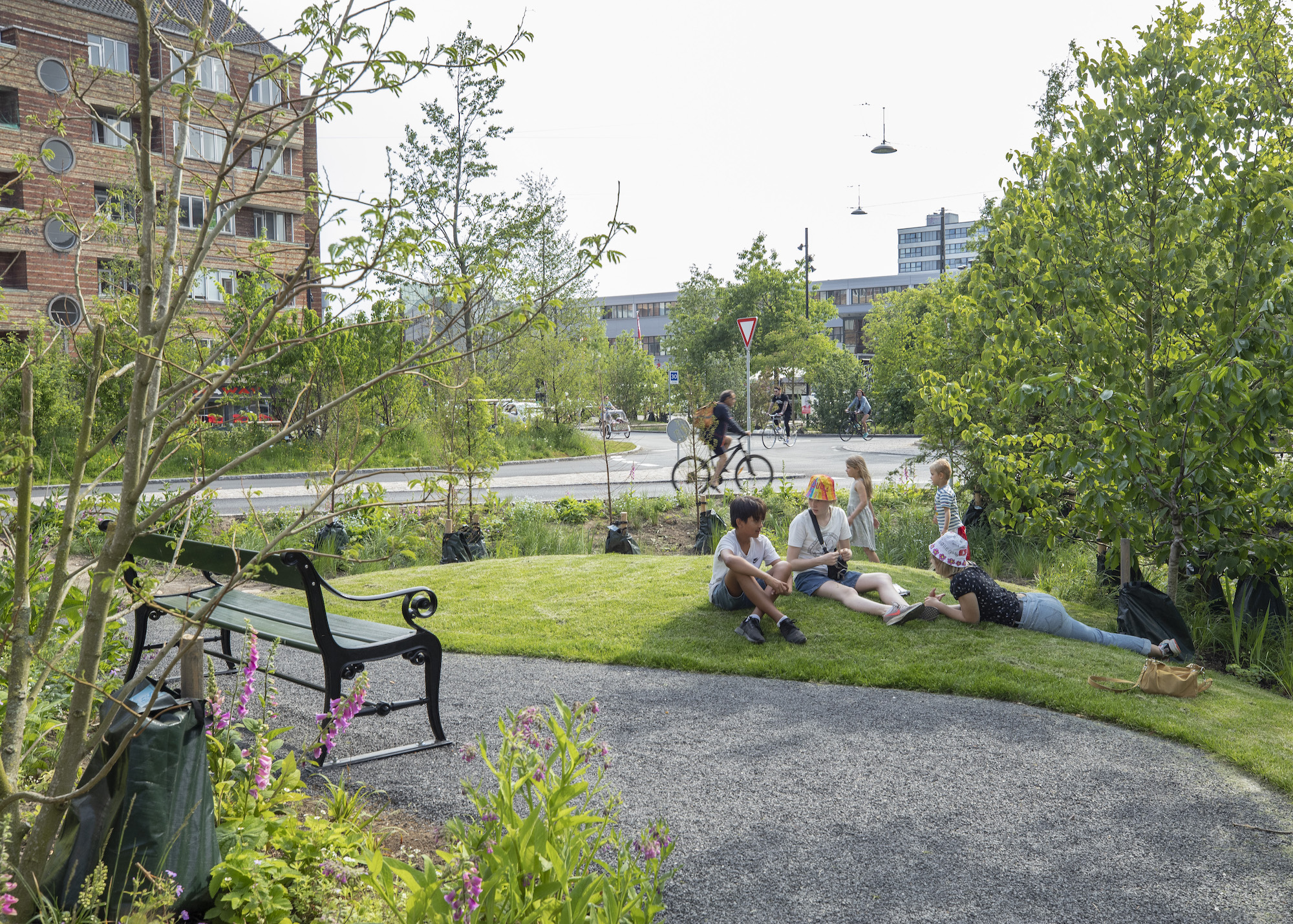
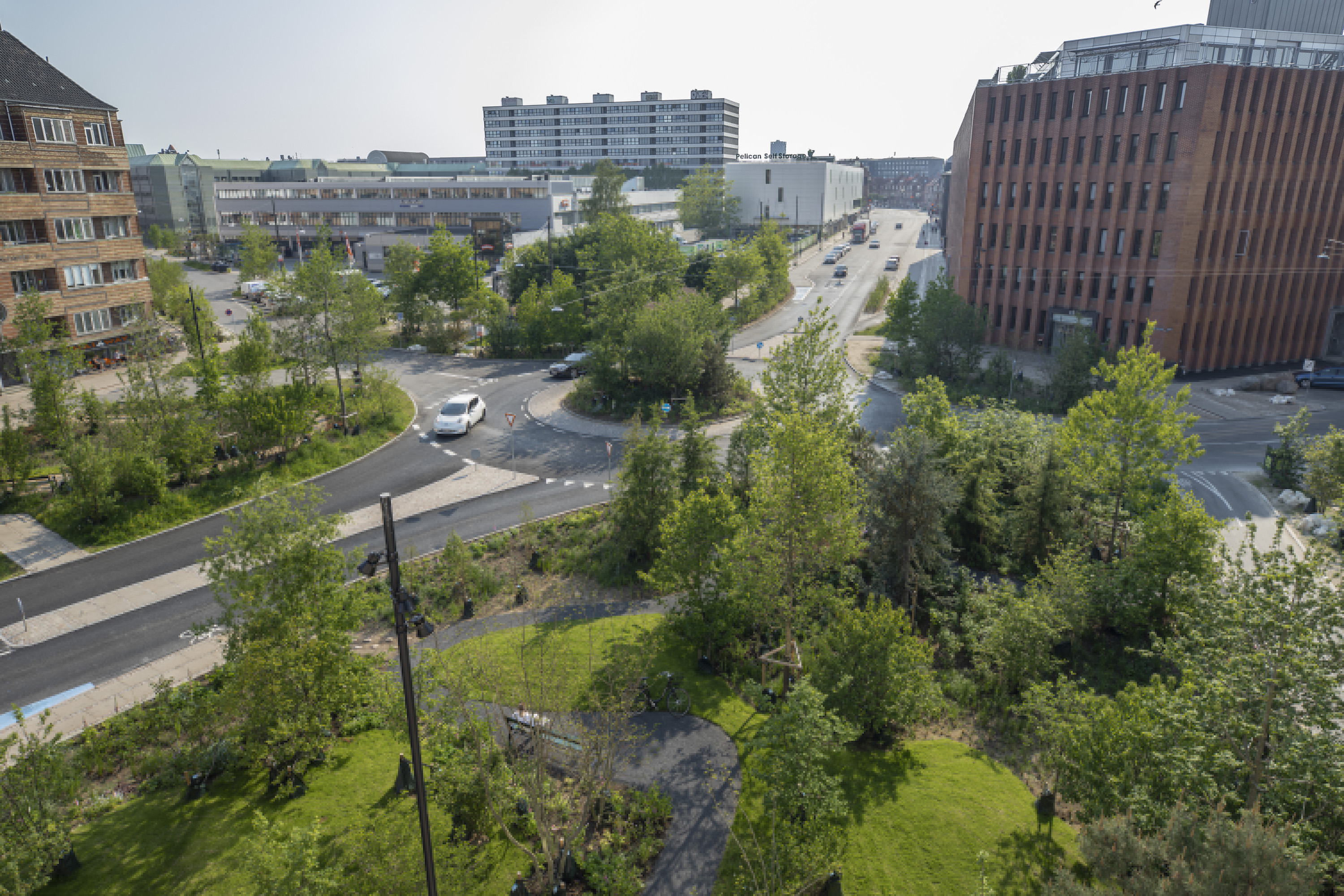
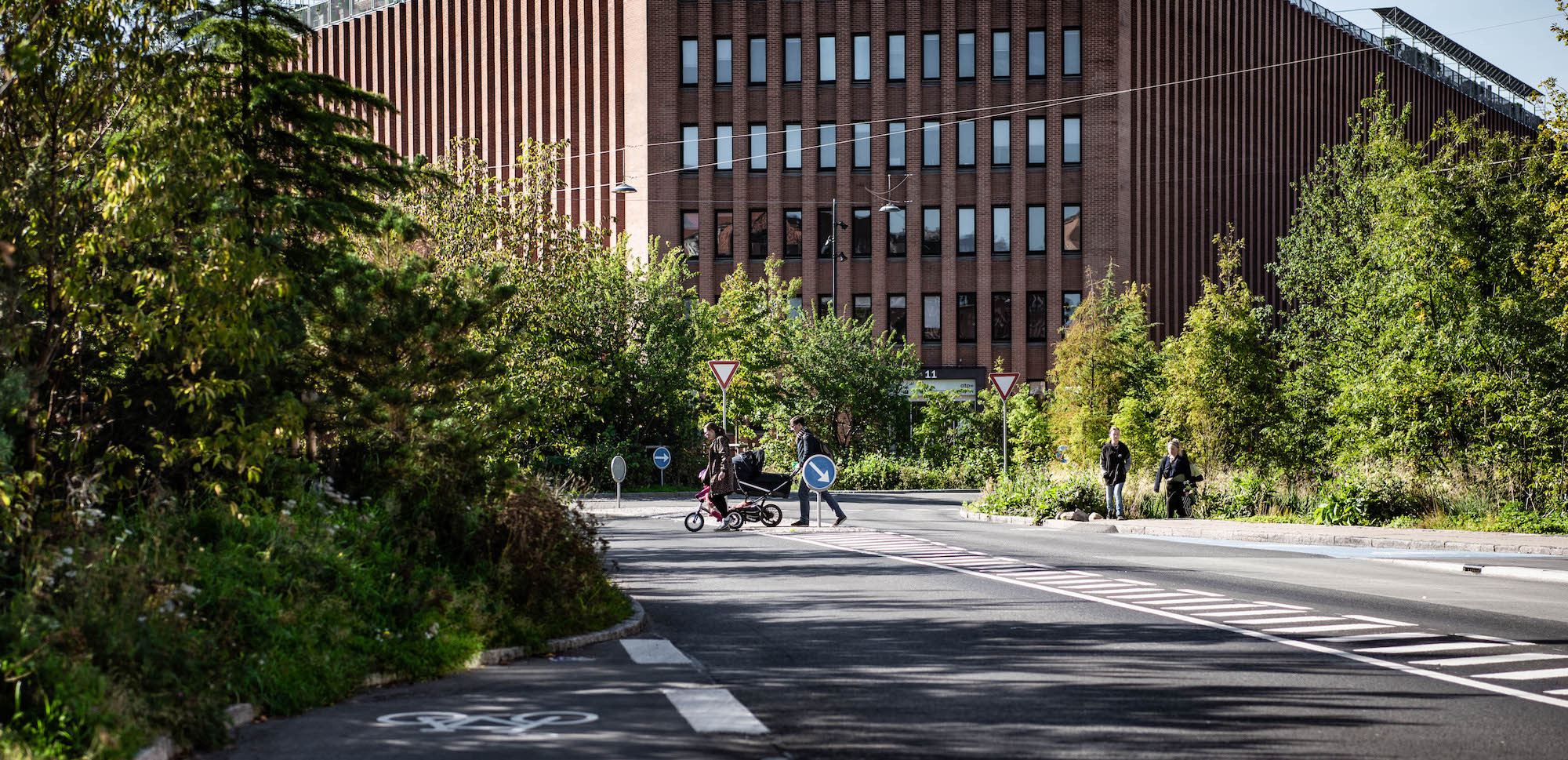
In addition to solving the challenges of cloudbursts, the project also provides a wide range of green qualities for new meetings and social activities for the local citizens.
The residents and the business community in the area have been involved in the development of the project ever since it started in 2012, through several citizens’ meetings, workshops and project groups. The program for the project has been developed based on this preliminary work. As a result, a more site-specific urban space is created that is adapted to the specific conditions and the life in this area.
“Urban nature is a new kind of nature in the city. Urban nature is the grown environment in co-existence with the built environment […]. Urban nature has both a practical function and an aesthetic function. It can solve a huge number of problems faced by our cities today – from overheating and pollution to cloudburst management and climate change adaptation. But it can also make life more worth living and provide inspiration for new social communities, new opportunities for creativity and new active and healthy ways of living.”
The project was inaugurated in the spring of 2019 so it is still early days, although it has been very well-received locally. One of the objectives of the URBiNAT project is to build an international Community of Practice focused on the potential of NBS, and other cities covered by the project have already expressed an interest in learning from adapting the model at home.
Further reading:
About SLA:
One of the URBiNAT project’s technical partners, SLA is an internationally renowned architecture practiced, based in Copenhagen, specialised in the fields of urban space, city planning and landscape architecture. The practice uses nature-based solutions to address some of the most challenging urban problems while providing an enhanced quality of life for all. For more information: https://www.sla.dk/en/




